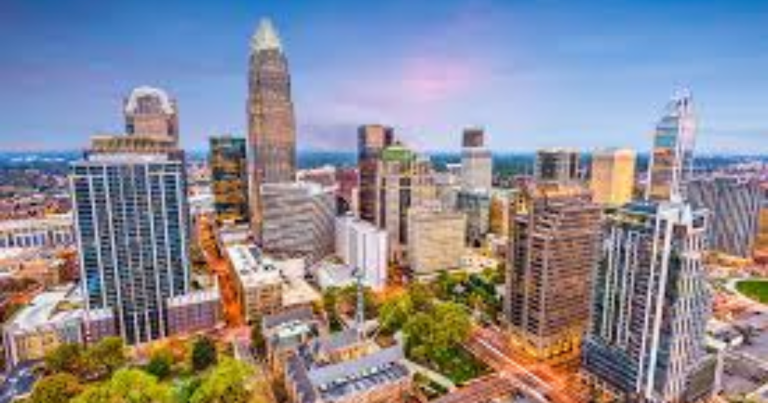New Hurricane-Proof Home Standards Reshape Florida Real Estate Market
You’re witnessing a transformation in Florida’s real estate market as new hurricane-proof home standards take hold. These regulations aren’t just about safety; they’re reshaping property values and buyer preferences. With up to 20% higher sale prices for compliant homes, you’ll notice builders rapidly adopting innovative materials and designs. But what does this mean for your investments and the future landscape of Florida’s housing market? As more buyers prioritize these resilient homes, you’re faced with intriguing opportunities and challenges. How will these changes influence your decisions in this evolving market? Let’s explore further.
Evolution of Building Codes
The evolution of building codes in Florida has been a data-driven response to the increasing frequency and intensity of hurricanes. You’ve seen how historic regulations have been continuously updated, reflecting a commitment to climate adaptation. These changes aren’t arbitrary; they’re grounded in thorough storm data analyses and damage assessments.
Historically, Florida’s regulations were reactive, often revised after major hurricanes caused significant destruction. Now, with advanced predictive models, the state proactively adjusts its codes to anticipate future climate challenges.
You might wonder how these changes affect construction practices. New codes require more resilient materials and innovative design techniques that can withstand high winds and flooding. Builders must use reinforced concrete, impact-resistant windows, and elevated structures to minimize damage.
By analyzing data from recent storms, Florida has identified specific vulnerabilities, leading to targeted code enhancements. The market focus on climate adaptation in building codes guarantees that structures are safer and more sustainable.
You’ll notice that these stricter regulations drive innovation in construction technology, pushing builders to adopt cutting-edge solutions. As a result, Florida’s building codes not only protect properties but also align with broader environmental sustainability goals.
Impact on Property Values
Property values in Florida are considerably influenced by the stringent hurricane-proof building standards. As these standards become more rigorous, homes built to meet them tend to see a rise in value.
You’ll notice that properties with enhanced hurricane resilience often attract buyers willing to pay a premium. This uptick is partly due to reduced insurance costs, as insurers recognize the lower risk of damage. Homeowners benefit from decreased premiums, making these properties more attractive and enhancing market stability.
Data shows that homes meeting these standards can sell for up to 20% more than those without such upgrades. For you as a buyer or investor, understanding this trend is essential.
As the frequency of hurricanes increases, properties that can withstand these natural disasters offer long-term value. In areas prone to severe weather, the demand for hurricane-proof homes is steadily rising. This demand supports a stable market, as buyers prioritize safety and potential savings.
If you’re considering investing in Florida real estate, focusing on properties built to these standards might just give you a competitive edge. The correlation between building standards and property values is clear, offering both security and profitability.
Builders Adopting New Technologies
Many builders in Florida are swiftly adopting new technologies to meet the growing demand for hurricane-proof homes. This shift is largely driven by the need to protect investments and capitalize on evolving market dynamics.
By integrating smart materials and sustainable practices, builders aren’t only enhancing resilience but also responding to consumer preferences for eco-friendly living spaces.
The construction industry is seeing a notable rise in the use of innovative materials and methods. Data shows that homes built with smart materials can withstand extreme weather conditions more effectively, reducing repair costs by up to 30%.
Builders are focusing on:
- Smart Materials: Utilizing advanced composites that offer superior strength and flexibility.
- Sustainable Practices: Incorporating eco-friendly building methods to minimize environmental impact.
- Energy Efficiency: Implementing solar panels and efficient HVAC systems to reduce energy costs.
- Advanced Design: Creating aerodynamic structures that deflect wind more efficiently.
- Tech Integration: Embedding IoT devices for real-time structural health monitoring.
These advancements aren’t just about meeting regulatory requirements; they represent a proactive approach to safeguard properties and enhance long-term value.
As a result, builders who quickly adapt to these technologies are better positioned to thrive in Florida’s competitive real estate market.
Homebuyer Preferences Shift
In response to shifting consumer demands, homebuyers in Florida are increasingly prioritizing hurricane resilience and sustainable features in their purchasing decisions. Recent data indicates that 68% of buyers place hurricane-proof construction at the top of their homebuyer priorities. This trend is reshaping the real estate market, with a noticeable uptick in demand for homes equipped with advanced safety features such as impact-resistant windows and reinforced roofing systems.
These preferences highlight a growing awareness of climate-related risks and a desire for long-term investment protection.
Additionally, sustainability is becoming a significant factor in homebuying decisions. Approximately 54% of buyers are actively seeking homes with energy-efficient systems and materials that reduce environmental impact. This aligns with a broader market movement towards eco-friendly living.
As a result, real estate agents are observing a shift where properties boasting hurricane and eco-conscious features command higher prices and experience faster sales cycles.
These emerging homebuyer priorities underscore a critical evolution in the Florida real estate landscape. By focusing on safety features and sustainability, buyers aren’t just purchasing a home—they’re investing in security and longevity, reflecting a strategic pivot in consumer behavior.
Investment Opportunities in Resilience
As Florida’s real estate market adjusts to the growing demand for hurricane-proof homes, savvy investors recognize lucrative opportunities in resilience-focused properties. By focusing on resilience, you can tap into a market that’s projected to grow as climate concerns rise.
The use of sustainable materials not only enhances property durability but also attracts environmentally-conscious buyers. Additionally, homes constructed with hurricane-proof standards often qualify for insurance incentives, reducing costs and increasing appeal.
According to recent data, properties equipped with resilience features have experienced a 15% faster sales rate compared to traditional homes. Investing in this niche isn’t just about meeting current demand; it’s positioning yourself for future market trends.
As insurance companies increasingly prioritize risk mitigation, homes with these features could see even more favorable insurance incentives, further boosting their market attractiveness.
Here’s how you can capitalize on this trend:
- Focus on high-quality sustainable materials that enhance property resilience.
- Identify properties in areas with increasing demand for hurricane-proof homes.
- Monitor insurance policies that offer cost benefits for resilient features.
- Stay informed on legislation mandating new building codes.
- Partner with builders and architects who specialize in resilience-focused designs.
Final Thoughts
You’re witnessing a real estate revolution in Florida, where hurricane-proof homes are the new gold standard. These fortified fortresses not only weather the fiercest storms but also boost property values by up to 20%. With 68% of buyers seeking resilience, builders are racing to adopt cutting-edge technologies. This shift isn’t just a trend—it’s a tidal wave of investment opportunities, as eco-conscious consumers anchor their dreams in homes that promise safety and sustainability in the face of nature’s fury.





